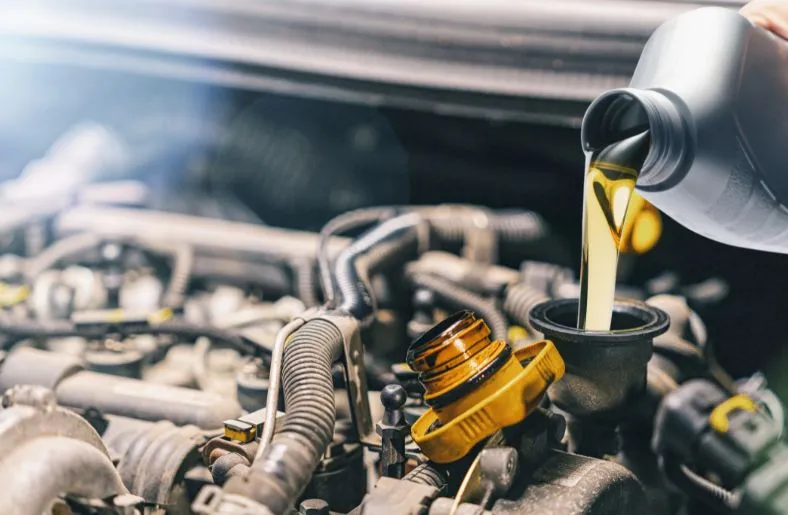Introduction
Picture this scenario: You’re about to change your car’s engine oil, and you head to the store to buy some fresh 5W-20 oil, as recommended in your owner’s manual. You carefully drain the old oil, replace the oil filter, and start pouring in the new oil. But as you’re pouring, you realize that the container says “5W-30.” Panic sets in. Did you just make a costly mistake? Is your engine doomed?
In this comprehensive guide, we will explore what happens when you accidentally used 5W-30 instead of 5W-20 engine oil and what steps you should take to mitigate any potential issues.
Table of Contents
Engine Oil Viscosity
To comprehend the impact of using the wrong engine oil, it’s crucial to grasp the concept of engine oil viscosity. Viscosity refers to an oil’s thickness or resistance to flow, and it’s typically represented by two numbers, such as 5W-20 or 5W-30:
- The first number (e.g., 5W) indicates the oil’s cold-temperature viscosity. The “W” stands for “winter,” and a lower number signifies better flow in colder conditions.
- The second number (e.g., 20 or 30) represents the oil’s viscosity at operating temperatures, usually around 100 degrees Celsius (212 degrees Fahrenheit). Higher numbers indicate thicker oils that offer more substantial protection at high temperatures.
5W-20 vs. 5W-30: The Key Differences
Before delving into the potential consequences of using 5W-30 instead of 5W-20 oil, let’s understand the differences between these two oil grades:
5W-20 Oil:
- Lower viscosity oil.
- Flows well in cold temperatures, aiding quick engine startup.
- Commonly recommended for newer vehicles with a focus on fuel efficiency.
- Reduces internal friction, potentially improving fuel economy.
- Suitable for engines designed to operate with thinner oils.
5W-30 Oil:
- Slightly higher viscosity compared to 5W-20.
- Offers better protection in high-temperature conditions.
- Versatile oil that can work well in various engines.
- Suitable for older vehicles or those with higher mileage.
- Robust protection under heavy loads or towing conditions.
The Implications of Using 5W-30 Instead of 5W-20
Now, let’s address the big question: What happens when you accidentally used 5W-30 instead of 5W-20 engine oil?
- Viscosity Mismatch: The most significant difference between these two oils is viscosity. 5W-30 is thicker than 5W-20. When you use 5W-30 oil in an engine designed for 5W-20, you’re essentially altering the oil’s viscosity characteristics. This viscosity mismatch can have several consequences.
- Potential for Reduced Fuel Efficiency: 5W-30 oil’s higher viscosity may result in increased internal friction within the engine. This added friction can lead to slightly reduced fuel efficiency compared to using the recommended 5W-20 oil.
- Cold-Start Challenges: One of the advantages of 5W-20 oil is its excellent cold-temperature performance. Thicker 5W-30 oil may not flow as quickly during cold starts, potentially leading to increased wear on engine components, especially in extremely cold climates.
- Engine Wear: The altered viscosity may not provide the optimal level of lubrication and protection for your engine. Over time, this can result in increased engine wear, potentially affecting the longevity of critical components.
- Emissions and Environmental Impact: If your vehicle relies on a specific oil viscosity to meet emissions regulations, using the wrong oil can impact your vehicle’s environmental performance and emissions levels.
- Warranty Concerns: If you experience engine issues and it’s discovered that you’ve used the incorrect oil, it could potentially affect your warranty coverage. Manufacturers recommend specific oil grades for a reason, and failing to follow their guidelines might void your warranty.
Related Guide: Can I Use 5W-30 Instead of 0W-20 Oil in My Car? Exploring the Differences and Implications (2023-2024)
What Should You Do Next?
If you’ve accidentally used 5W-30 instead of 5W-20 engine oil, don’t panic. Here are the steps you should take to address the situation:
- Assess the Mixture: Determine the ratio of the incorrectly added 5W-30 oil to the correct 5W-20 oil in your engine. If it’s a relatively small amount, the impact may be less severe.
- Check Your Owner’s Manual: Review your vehicle’s owner’s manual to understand the manufacturer’s recommendations and any guidance provided regarding using the wrong oil. Some manuals offer advice on how to address such situations.
- Monitor Engine Performance: Pay close attention to your vehicle’s performance. Listen for unusual noises, check for warning lights on your dashboard, and be vigilant for any signs of engine issues.
- Consider an Oil Change: If you’re concerned about the consequences of the oil mixture, consider having an oil change performed by a professional mechanic or at an authorized service center. This will remove the mixed oil and ensure the correct oil is used.
- Maintain Regular Oil Changes: Moving forward, stick to regular oil change intervals using the recommended 5W-20 oil. Consistent maintenance is essential for your engine’s health.
- Keep Records: Document the incident and any actions you take to rectify it. This can be valuable information if you encounter any future engine problems or warranty-related issues.
FAQs
1. What can happen if I have accidentally used 5w-30 instead of 5w-20?
Your engine needs to work harder to complete its tasks with the increased resistance of the thicker oil. The additional friction due to thicker oil can slow down your internal combustion engine and produce problems like oil leaks, engine deposits, and sludge buildup.
2. Can I use 5w-30 instead of 5w-20 in a high-mileage engine?
You can use 5w-30 oil instead of 5w-20 motor oil if you are driving the vehicle in hot climates, and your vehicle has covered over 120,000 miles. As the vehicle runs, the clearances between engine parts, such as between piston and engine cylinder, and between shaft and bearings increase.
3. What happens if you put the wrong oil in your car?
Use only what the owner’s manual specifies. Using the wrong oil can lead to reduced lubrication and shorter engine life. If the manual says to use synthetic oil, do so. Contrary to what some believe, adding synthetic oil to regular oil won’t harm the engine, but there’s also no benefit in doing so.
4. Is 5w-20 thicker than 5w-30?
So, due to viscosity, 5w-20 is a thinner oil during operating temperatures, whereas 5w3-0 is thicker during operating temperatures. A majority of manufacturers are now producing engines that operate on 5w-20 oil, so it’s important to stick to this viscosity and not substitute 5w-30.
Conclusion
If you have accidentally used 5W-30 instead of 5W-20 engine oil then it will have implications, but it’s not a catastrophe. While there are potential consequences, the severity of these consequences largely depends on the extent of the mixture and your vehicle’s specific engine design.
To minimize the risk and ensure your engine continues to perform optimally, consider following the steps mentioned above. Remember, regular maintenance and adherence to manufacturer recommendations are key to keeping your vehicle running smoothly. If in doubt, consult a professional mechanic for guidance on the best course of action. In the world of automobiles, a small mistake need not become a big problem with the right approach and timely intervention.

